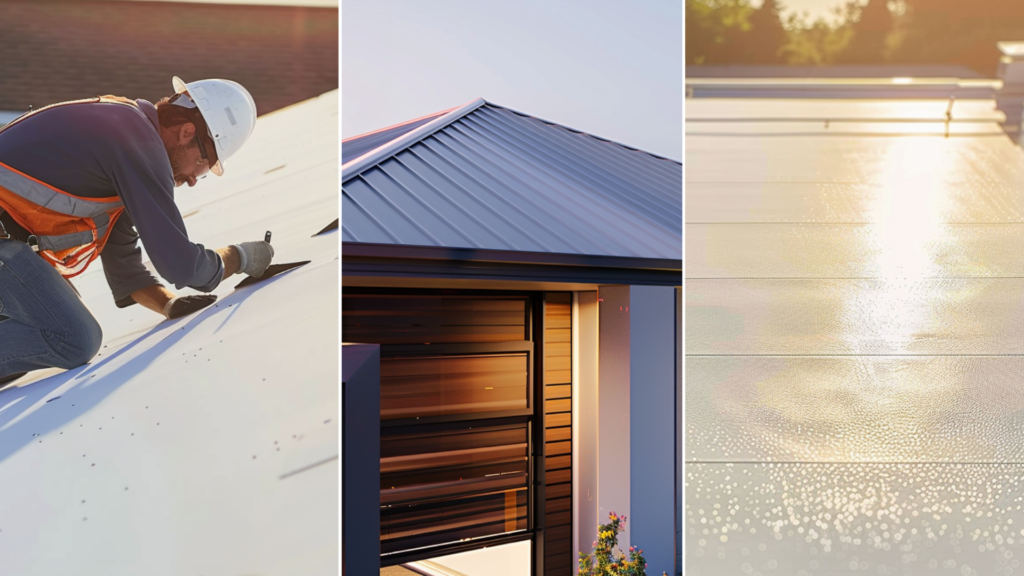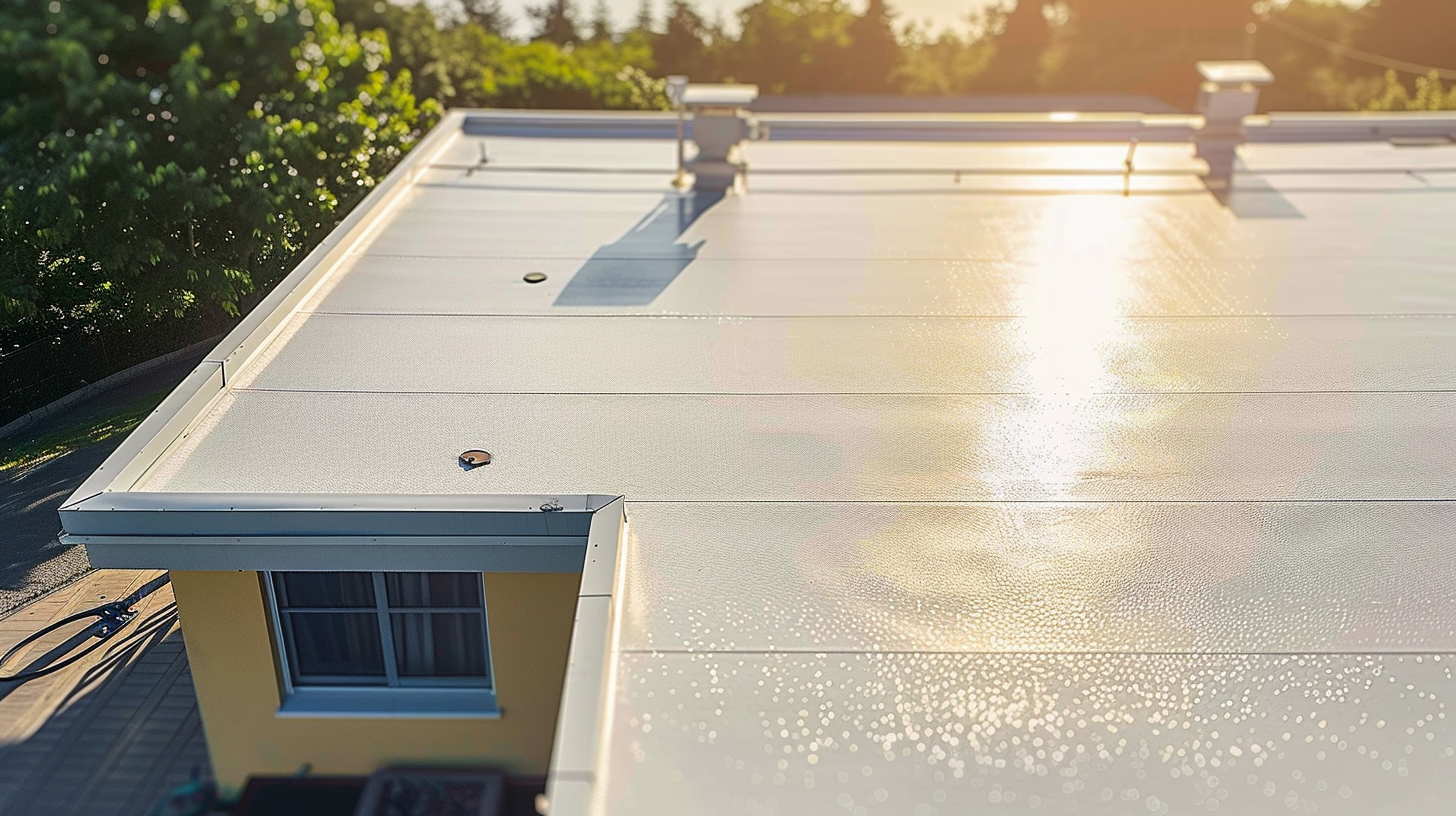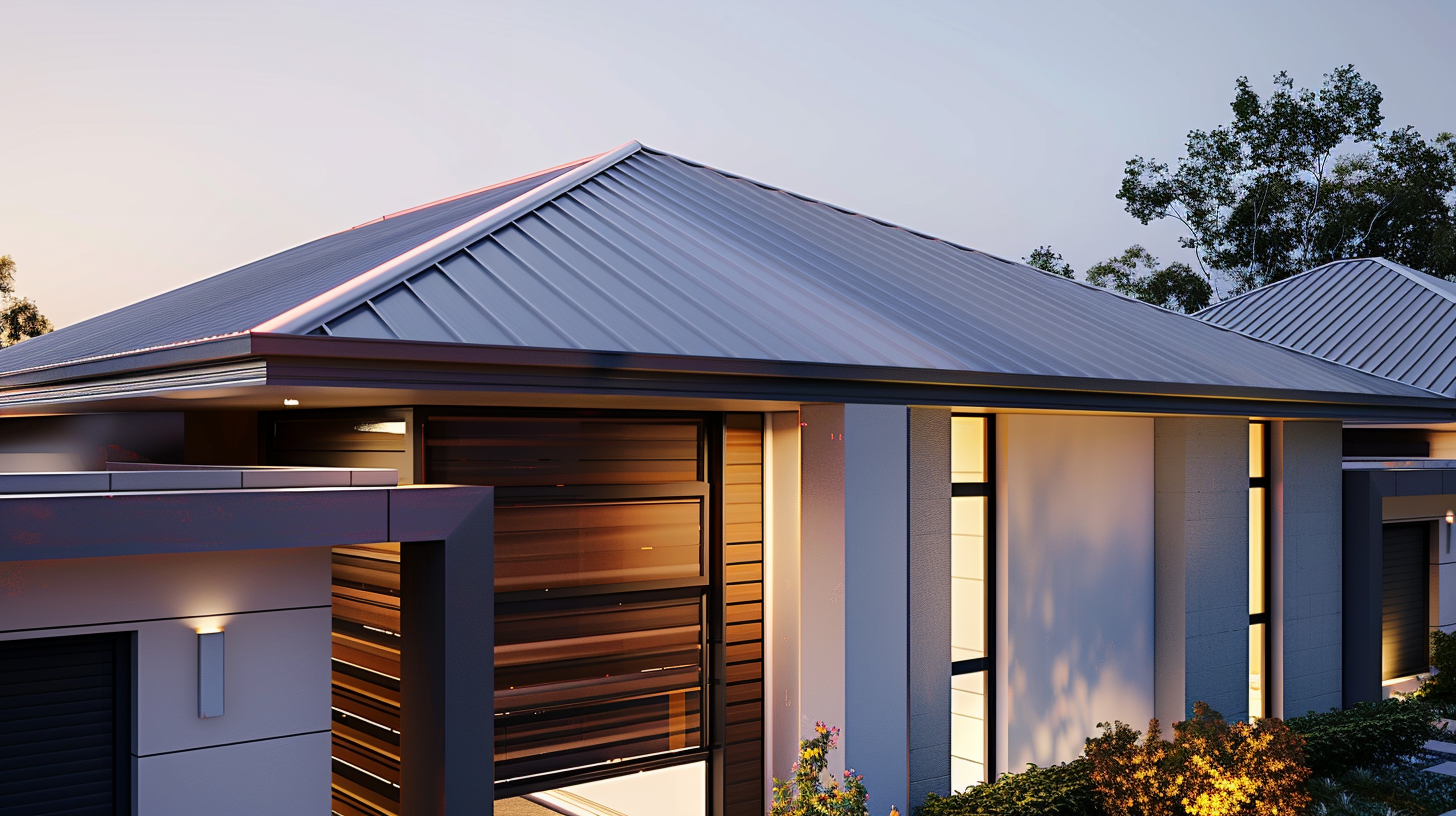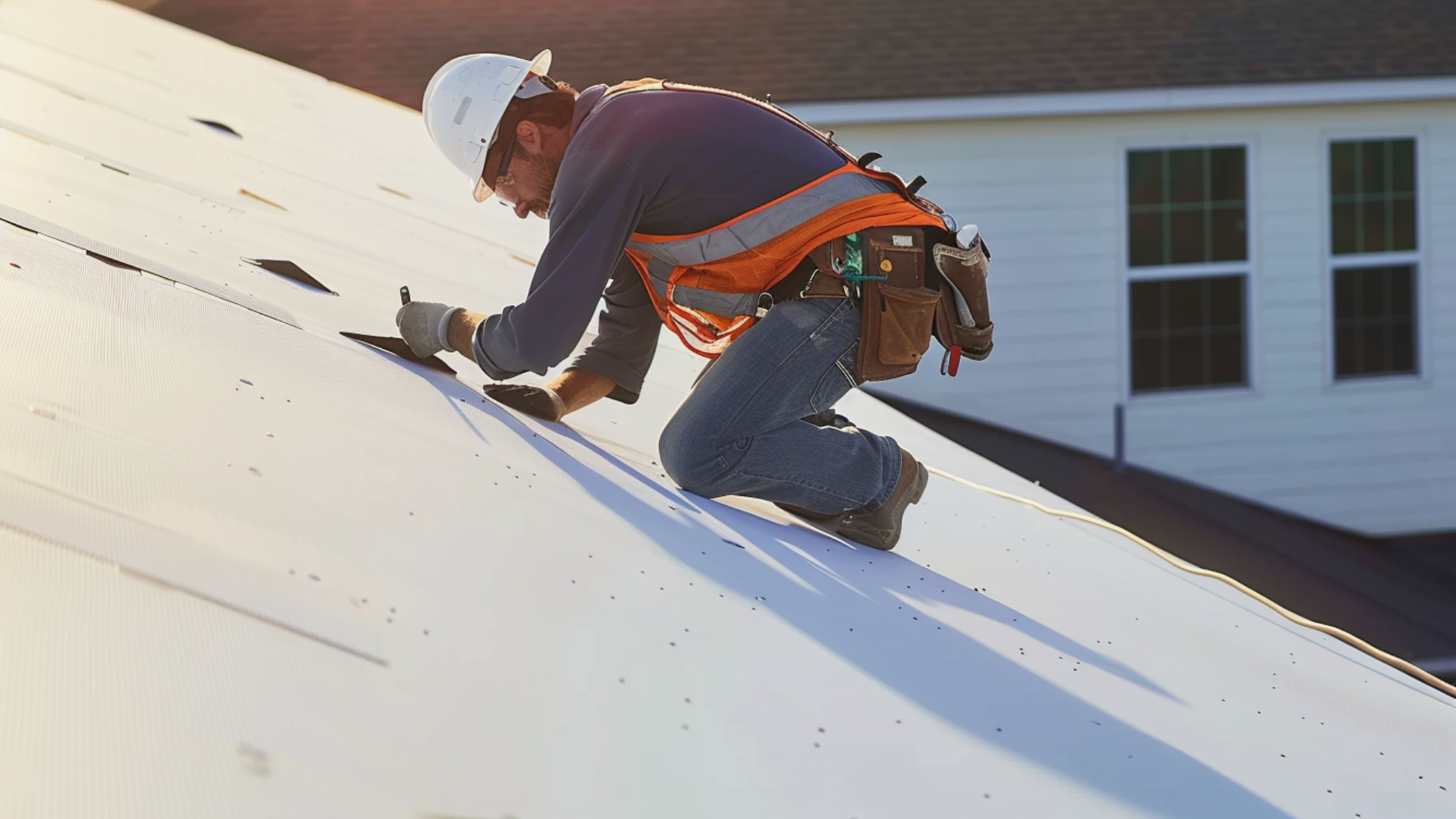Showing all posts tagged "Roofing"
The Rise of Thermoplastic Roofing: Benefits and Key Considerations

Definition of Thermoplastic Roofing
Benefits of Choosing Thermoplastic Roofing
Growing Popularity in the Roofing Industry

Thermoplastic Roofing - Types of Thermoplastic Roofing Materials - Sky Roofing Construction & Remodeling
Types of Thermoplastic Roofing Materials
Thermoplastic Polyolefin (TPO)
Polyvinyl Chloride (PVC)
Ethylene-Propylene Rubber (EPDM)

Thermoplastic Roofing - Characteristics of Thermoplastic Roofing Membranes - Sky Roofing Construction & Remodeling
Characteristics of Thermoplastic Roofing Membranes
Energy Efficiency and Reflectivity
Resistance to Mold Growth
Thermal Expansions and Contractions
Durability and Longevity

Thermoplastic Roofing - Installation Process for Thermoplastic Roofing Systems - Sky Roofing Construction & Remodeling
Installation Process for Thermoplastic Roofing Systems
Thermoplastic roofing systems are gaining popularity in the construction industry due to their numerous benefits. These roofing systems are known for their durability, weather resistance, and energy efficiency, potentially reducing roofing costs. Additionally, they are lightweight, flexible, and have a long lifespan. To fully enjoy these benefits, it is crucial to ensure proper installation by a roofing professional. The installation process for thermoplastic roofing systems involves several key steps:
- A roofing professional thoroughly inspects the existing roof, making any necessary repairs or preparations.
- The thermoplastic membrane is cut and rolled out onto the roof surface, adhered to using heat, and seams are welded together.
- The edges and flashings are secured, and the roof is inspected to ensure a watertight and visually appealing finish.
By following these installation steps, property owners can be confident in the longevity and performance of their thermoplastic roofing systems.
Preparation of the Roof Surface
Application of Bonding Adhesives or Heat Welding
Two standard methods are used to maintain and repair a TPO roof: bonding adhesives or heat welding. Both methods offer their benefits and advantages. Bonding adhesives are applied to the seams of the TPO roof, creating a strong seam and durable seal. This method is relatively simple and cost-effective, making it a popular choice for repairing minor issues with roof materials. On the other hand, heat welding involves:
- A specialized tool is used to melt the TPO membrane at the seams.
- Fusing them.
- Creating seamless application times.
Heat welding is known for its long-lasting results and superior strength in resistance.
Lorem ipsum dolor sit amet, consectetur adipiscing elit, sed do eiusmod tempor incididunt ut labore et dolore magna aliqua. Ut enim ad minim veniam, quis nostrud exercitation ullamco laboris nisi ut aliquip ex ea commodo consequat. Duis aute irure dolor in reprehenderit in voluptate velit esse cillum dolore eu fugiat nulla pariatur. Excepteur sint occaecat cupidatat non proident, sunt in culpa qui officia deserunt mollit anim id est laborum. Lorem ipsum dolor sit amet, consectetur adipiscing elit, sed do eiusmod tempor incididunt ut labore et dolore magna aliqua. Ut enim ad minim veniam, quis nostrud exercitation ullamco laboris nisi ut aliquip ex ea commodo consequat. Duis aute irure dolor in reprehenderit in voluptate velit esse cillum dolore eu fugiat nulla pariatur. Excepteur sint occaecat cupidatat non
Sky Roofing Construction & Remodeling: Your Partner for Thermoplastic Roofing Success
Explore the advantages of thermoplastic roofing and its various applications in commercial and residential settings. Whether you’re looking to enhance energy efficiency, durability, or aesthetic appeal, our team at Sky Roofing Construction & Remodeling (https://skyroofingconstructiontx.com) is ready to assist you. Schedule a consultation today by calling (210) 942-9797 to learn more about our expert installation services and find the perfect roofing solution for your property.
The post The Rise of Thermoplastic Roofing: Benefits and Key Considerations appeared first on Roofing Contractor San Antonio - Sky Roofing Construction & Remodeling.
from Roofing Contractor San Antonio – Sky Roofing Construction & Remodeling https://skyroofingconstructiontx.com/thermoplastic-roofing/
via Sky Roofing Construction & Remodeling
Posted on June 24th, 2024
Thermoplastic Roofing - Sky Roofing Construction & Remodeling - Call (210) 942-9797
Watch video on YouTube here: https://www.youtube.com/watch?v=ZWvUbLM45qI
via Sky Roofing Construction & Remodeling
Posted on June 24th, 2024
The Rise of Thermoplastic Roofing: Benefits and Key Considerations

Definition of Thermoplastic Roofing
Benefits of Choosing Thermoplastic Roofing
Growing Popularity in the Roofing Industry

Thermoplastic Roofing - Types of Thermoplastic Roofing Materials - Sky Roofing Construction & Remodeling
Types of Thermoplastic Roofing Materials
Thermoplastic Polyolefin (TPO)
Polyvinyl Chloride (PVC)
Ethylene-Propylene Rubber (EPDM)

Thermoplastic Roofing - Characteristics of Thermoplastic Roofing Membranes - Sky Roofing Construction & Remodeling
Characteristics of Thermoplastic Roofing Membranes
Energy Efficiency and Reflectivity
Resistance to Mold Growth
Thermal Expansions and Contractions
Durability and Longevity

Thermoplastic Roofing - Installation Process for Thermoplastic Roofing Systems - Sky Roofing Construction & Remodeling
Installation Process for Thermoplastic Roofing Systems
Thermoplastic roofing systems are gaining popularity in the construction industry due to their numerous benefits. These roofing systems are known for their durability, weather resistance, and energy efficiency, potentially reducing roofing costs. Additionally, they are lightweight, flexible, and have a long lifespan. To fully enjoy these benefits, it is crucial to ensure proper installation by a roofing professional. The installation process for thermoplastic roofing systems involves several key steps:
- A roofing professional thoroughly inspects the existing roof, making any necessary repairs or preparations.
- The thermoplastic membrane is cut and rolled out onto the roof surface, adhered to using heat, and seams are welded together.
- The edges and flashings are secured, and the roof is inspected to ensure a watertight and visually appealing finish.
By following these installation steps, property owners can be confident in the longevity and performance of their thermoplastic roofing systems.
Preparation of the Roof Surface
Application of Bonding Adhesives or Heat Welding
Two standard methods are used to maintain and repair a TPO roof: bonding adhesives or heat welding. Both methods offer their benefits and advantages. Bonding adhesives are applied to the seams of the TPO roof, creating a strong seam and durable seal. This method is relatively simple and cost-effective, making it a popular choice for repairing minor issues with roof materials. On the other hand, heat welding involves:
- A specialized tool is used to melt the TPO membrane at the seams.
- Fusing them.
- Creating seamless application times.
Heat welding is known for its long-lasting results and superior strength in resistance.
Lorem ipsum dolor sit amet, consectetur adipiscing elit, sed do eiusmod tempor incididunt ut labore et dolore magna aliqua. Ut enim ad minim veniam, quis nostrud exercitation ullamco laboris nisi ut aliquip ex ea commodo consequat. Duis aute irure dolor in reprehenderit in voluptate velit esse cillum dolore eu fugiat nulla pariatur. Excepteur sint occaecat cupidatat non proident, sunt in culpa qui officia deserunt mollit anim id est laborum. Lorem ipsum dolor sit amet, consectetur adipiscing elit, sed do eiusmod tempor incididunt ut labore et dolore magna aliqua. Ut enim ad minim veniam, quis nostrud exercitation ullamco laboris nisi ut aliquip ex ea commodo consequat. Duis aute irure dolor in reprehenderit in voluptate velit esse cillum dolore eu fugiat nulla pariatur. Excepteur sint occaecat cupidatat non
Sky Roofing Construction & Remodeling: Your Partner for Thermoplastic Roofing Success
Explore the advantages of thermoplastic roofing and its various applications in commercial and residential settings. Whether you’re looking to enhance energy efficiency, durability, or aesthetic appeal, our team at Sky Roofing Construction & Remodeling (https://skyroofingconstructiontx.com) is ready to assist you. Schedule a consultation today by calling (210) 942-9797 to learn more about our expert installation services and find the perfect roofing solution for your property.
The post The Rise of Thermoplastic Roofing: Benefits and Key Considerations appeared first on Roofing Contractor San Antonio - Sky Roofing Construction & Remodeling.
from Roofing Contractor San Antonio – Sky Roofing Construction & Remodeling https://skyroofingconstructiontx.com/thermoplastic-roofing/
via Sky Roofing Construction & Remodeling
Posted on June 24th, 2024
Thermoplastic Roofing - Characteristics of Thermoplastic Roofing Membranes - Sky Roofing Construction & Remodeling

Posted on June 24th, 2024
Thermoplastic Roofing - Installation Process for Thermoplastic Roofing Systems - Sky Roofing Construction & Remodeling

Posted on June 24th, 2024
Thermoplastic Roofing - Characteristics of Thermoplastic Roofing Membranes - Sky Roofing Construction & Remodeling

Posted on June 24th, 2024
Thermoplastic Roofing - Sky Roofing Construction & Remodeling - Call (210) 942-9797

Posted on June 24th, 2024
Thermoplastic Roofing - Installation Process for Thermoplastic Roofing Systems - Sky Roofing Construction & Remodeling

Posted on June 24th, 2024
Thermoplastic Roofing - Types of Thermoplastic Roofing Materials - Sky Roofing Construction & Remodeling

Posted on June 24th, 2024
Rubber Roofs - Benefits of Rubber Roofs - Sky Roofing Construction & Remodeling

Posted on June 21st, 2024

